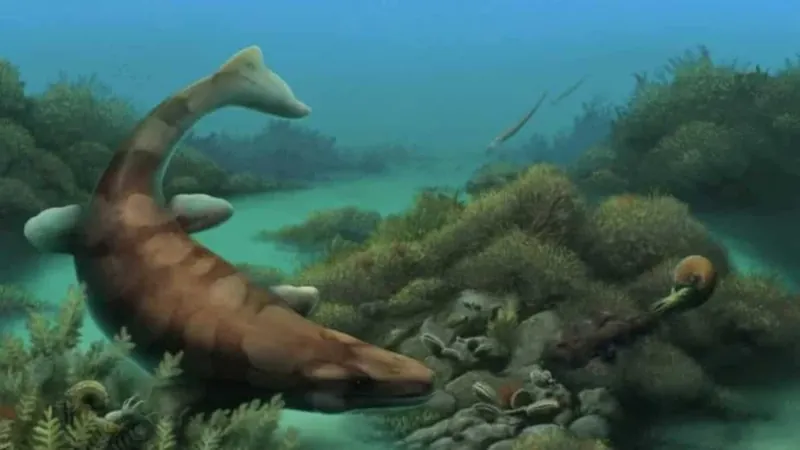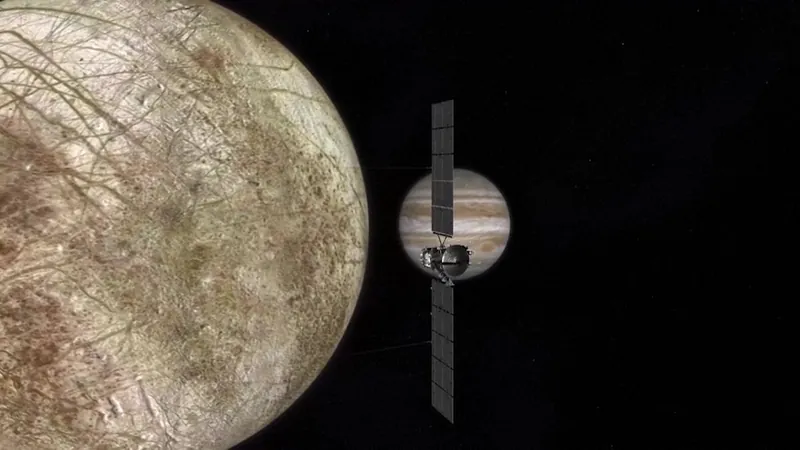
Unveiling the Sea Monster: A Prehistoric Predator in Texas!
2024-09-20
Unveiling the Sea Monster: A Prehistoric Predator in Texas!
Scientists have unearthed a remarkable discovery from 85 million years ago: a complete fossil jawbone belonging to the gigantic marine predator, Globidens alabamensis, found in what is now dry land in Texas. This sea monster once swam freely in the oceans that covered the area, offering a glimpse into the formidable wildlife of the Cretaceous period.
Paleontologists consider such a well-preserved fossil rare, as it provides crucial insights into how these ancient carnivores hunted their prey. Globidens, a member of the mosasaur family first identified in 1912, showcases an intriguing evolutionary strategy that diverges from expectations of a typical sea predator.
The fossil, discovered by fossil hunter Courtney Travanini in the Ozan Formation of northeastern Texas, boasts six intact teeth on the left side and twelve on the right, with notable dimensions—some measuring up to 1.5 inches (4 centimeters) long. The jaw structure is described as "robust and massive," indicating the creature’s impressive size.
Contrary to many carnivorous reptiles known for their sharp, serrated teeth, Globidens exhibited a unique dental structure. Instead of tearing into their prey, these sea reptiles demonstrated a fascinating alternative hunting method: they likely swallowed their food whole. Some theories further propose that certain members of the species may have had poisonous glands, allowing them to incapacitate their prey in a more stealthy fashion.
Fossils of Globidens have been predominantly found within the Western Mississippi Embayment, a geological basin that once teemed with marine life but now consists of dry land. This discovery brings attention to the region’s prehistoric ecosystem that existed long before it was transformed into the landscape we know today.
Identifying the exact subspecies of Globidens from this fossil remains a challenge for researchers, as no complete jawbone had ever been documented before. However, scientists are confident that its shape and tooth count suggest it belonged to the G. alabamensis species.
Interestingly, while these sea monsters were sensationally portrayed in popular media such as "Jurassic World," where they were depicted as colossal beasts capable of devouring sharks in one bite, the typical length of a Globidens was about 20 feet (6 meters). For perspective, the largest known marine creature from the dinosaur era, Shastasaurus, reached an incredible length of 65 feet (20 meters).
This discovery not only enhances our understanding of ancient marine predators but also reminds us of the dynamic landscapes that once existed before the earth we walk on today took shape. As scientists continue to study these fossils, we anticipate uncovering even more secrets from our planet’s distant past. Stay tuned for more thrilling revelations!




 Brasil (PT)
Brasil (PT)
 Canada (EN)
Canada (EN)
 Chile (ES)
Chile (ES)
 España (ES)
España (ES)
 France (FR)
France (FR)
 Hong Kong (EN)
Hong Kong (EN)
 Italia (IT)
Italia (IT)
 日本 (JA)
日本 (JA)
 Magyarország (HU)
Magyarország (HU)
 Norge (NO)
Norge (NO)
 Polska (PL)
Polska (PL)
 Schweiz (DE)
Schweiz (DE)
 Singapore (EN)
Singapore (EN)
 Sverige (SV)
Sverige (SV)
 Suomi (FI)
Suomi (FI)
 Türkiye (TR)
Türkiye (TR)